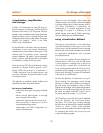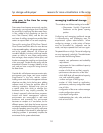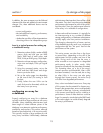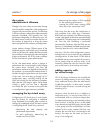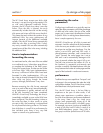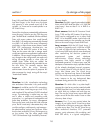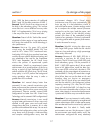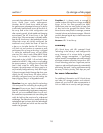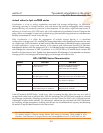
section 1
Every LUN would have 30 spindles at its disposal.
And don’t forget, in the virtual array the spare
disk capacity is also spread across all of the
spindles, i.e., there are no unused spindles in an
HP Virtual Array.
Second, the virtual array automatically performance
tunes the array 24 hours per day, 365 days per
year. The RAID level is matched with the workload.
Data with access patterns that would benefit
from RAID 1+0 storage are automatically directed
to a RAID 1+0 section of the array. Infrequently
used data, or data whose access patterns match
RAID 5DP performance characteristics, are
directed to the RAID 5DP section of the array.
These are the same rules that a storage expert
would use to optimize an application’s performance.
In addition, like an expert storage administrator,
any changes to the configuration are made only
during low-usage periods or when disks are
added. Note: When disks are added, the
existing LUNs are automatically extended across
the new disks. This normally requires data
movement within the array. However,
administrators have the option to postpone this
data movement by simply turning off the array’s
“Auto-Include” feature.
faqs
Question: Isn’t this virtualization technology
new and doesn’t that make it risky and untried?
Answer: It would be new for HP’s competitors,
but HP has been virtualizing arrays since 1995,
and since then HP has sold over 20,000 virtualized
arrays. The technology is neither new nor risky
and it offers a simple and compelling value
proposition, i.e., great ease of management and
great data protection. For arrays, management
costs are far more costly than the initial purchase
price. The HP virtual array is the easiest array in the
world to configure, add capacity, and manage—
the administration savings are significant. It also
has the best availability of any mid-range array
on the market. See the white paper titled
“VA7100 Hardware High Availability Features”
1
Short answer: Both the HP Surestore Virtual
Array 7100 and the HP Surestore Virtual Array
7400 can be configured to run in either fixed
RAID 1+0 or AutoRAID modes. And to help with
performance analysis, the controller can provide
data on the actual usage of each RAID level.
Long answer: With the HP Virtual Array, if
your data is frequently used, it WILL be in RAID
1+0 and will have the best performance. The
virtual array RAID level policies were developed
after researching the decision patterns of
experienced system and database
administrators. Almost always, technology
progresses from highly manual to highly
automated operations. In almost every case, the
developers of automation simply replicate the best
of the already developed manual processes.
This is exactly what HP did with the HP Virtual
Array. Also please note: The Virtual Array
policies are improved over those of the Model
12H. The virtual array really does strive in almost
every instance to do any background data
movement during periods of low array activity.
Question: On which disks is my data kept? I
suppose the virtual array can be trusted to handle
the RAID level decisions, but I also need to know
on which disks my indexes and redo logs are
kept. The way the virtual array moves data and
stripes across all the disks means I have no idea
where my data is kept.
Answer: First, if you are worried about the
integrity of your data, the HP Virtual Array does
a combination of things to protect your data that
no other array does. First, the HP Virtual Array
offers end-to-end checksum, ECC protected
memory, parity coherence, disk scrubbing, and
RAID 5DP which, in a typical configuration,
1.6
hp storage white paper
for more details.
Question: Shouldn’t a good system administrator
know which RAID level the data is in? With the
virtual array, I have no idea if it is in RAID 5 or
RAID 1+0.





